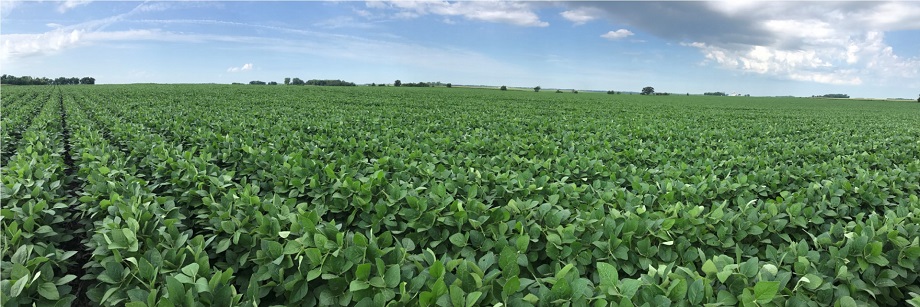Seed Shock
Apr 20, 2020

Its April 15th as I write this, and the calendar makes me feel like we should be farming. It’s only the calendar that makes me feel this way as current conditions are not optimal for planting any crop. A common thing we watch as planting nears is the soil temperatures. Usually we are planting as soon as soil temperatures start flirting with the minimum required for germination, and sometimes before that. In this early planting time frame, we get a lot of questions about when to keep planting and when to stop. A big concern when planting into cold soils is the risk of seed shock. Seed shock occurs when a planted seed takes up water that is to cold for the seed to handle. Since different crops have different germination methods, seed shock works differently between crops. For today we are going to talk about how seed shock works in corn and soybeans.
In corn, the most important timeframe after planting is the first 48 hours. This is when the seed will take up water for germination. Water becomes denser at lower temperatures and reaches its densest at 39 degrees. When a seed takes up water, the cells stretch and expands causing seed swelling. If a seed takes up cold water, which is denser, it can over stretch the cell causing damage. This leads to reduce growth of the seedling and severe cases will kill the seedling. Planting when the soil temps are above 50 degrees will reduce the concern of seed shock. In the early planting timeframe, pay close attention to the 48-hour forecast. If the soil temps are in the upper 40’s and the forecast is conducive for soil warming, don’t be afraid to continue or start planting. On the other side, if soil temps are questionable for germination and there’s cold rain in the 48 hour forecast it would be wise to refrain from planting.
Soybeans work differently than corn. Soybean seeds take up water in two phases. The first phase happens within the first 24 hours of planting in which the seed will take up roughly 70% of the water needed for germination. The second phase is a much slower process and seed shock isn’t a big concern during this phase. For soybeans the bottom line is this, plant them if you think the soil temps won’t get below 50 degrees for at least 24 hours after planting.
A factor more important than all this is soil moisture content. While cold soils will delay germination and emergence, cold soils plus high moisture content can lead to yield robbing soil borne pathogens. The cold soil will delay emergence, giving pathogens an extended period to infect seedlings. Consider soil moisture content when making management decision such as planting date and seed treatment.
Not always but almost always, the early planted fields are some of our highest yielding. Knowing when to continue planting or when to hold off can be the difference between your highest and lowest yielding field. If you have any questions about seed shock or planting timing, give your local Allied Agronomy agronomist a call today.
This article is an opinion and not a base for trade decisions. Allied Agronomy and the author are not responsible for decisions made based on this article.
In corn, the most important timeframe after planting is the first 48 hours. This is when the seed will take up water for germination. Water becomes denser at lower temperatures and reaches its densest at 39 degrees. When a seed takes up water, the cells stretch and expands causing seed swelling. If a seed takes up cold water, which is denser, it can over stretch the cell causing damage. This leads to reduce growth of the seedling and severe cases will kill the seedling. Planting when the soil temps are above 50 degrees will reduce the concern of seed shock. In the early planting timeframe, pay close attention to the 48-hour forecast. If the soil temps are in the upper 40’s and the forecast is conducive for soil warming, don’t be afraid to continue or start planting. On the other side, if soil temps are questionable for germination and there’s cold rain in the 48 hour forecast it would be wise to refrain from planting.
Soybeans work differently than corn. Soybean seeds take up water in two phases. The first phase happens within the first 24 hours of planting in which the seed will take up roughly 70% of the water needed for germination. The second phase is a much slower process and seed shock isn’t a big concern during this phase. For soybeans the bottom line is this, plant them if you think the soil temps won’t get below 50 degrees for at least 24 hours after planting.
A factor more important than all this is soil moisture content. While cold soils will delay germination and emergence, cold soils plus high moisture content can lead to yield robbing soil borne pathogens. The cold soil will delay emergence, giving pathogens an extended period to infect seedlings. Consider soil moisture content when making management decision such as planting date and seed treatment.
Not always but almost always, the early planted fields are some of our highest yielding. Knowing when to continue planting or when to hold off can be the difference between your highest and lowest yielding field. If you have any questions about seed shock or planting timing, give your local Allied Agronomy agronomist a call today.
This article is an opinion and not a base for trade decisions. Allied Agronomy and the author are not responsible for decisions made based on this article.